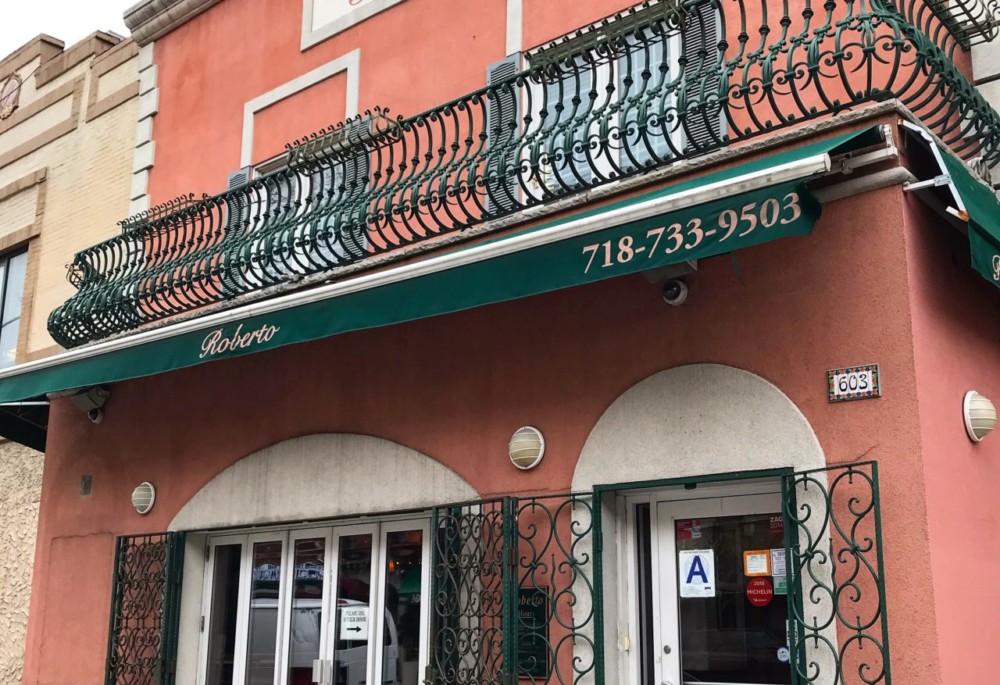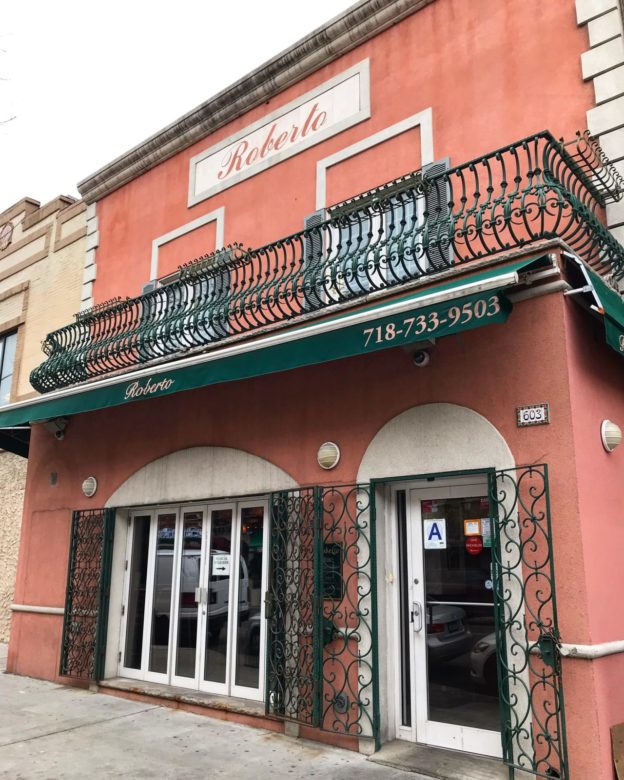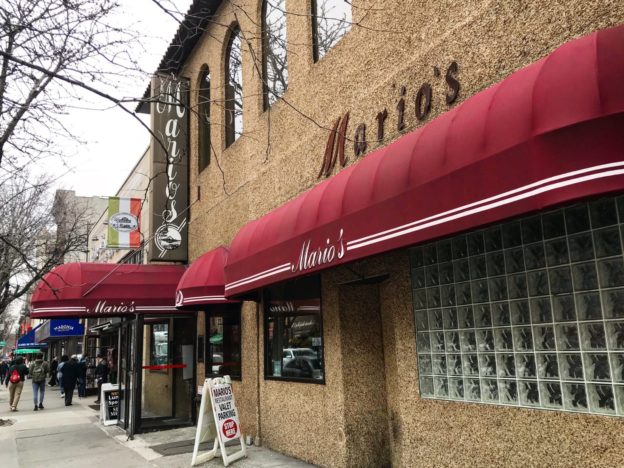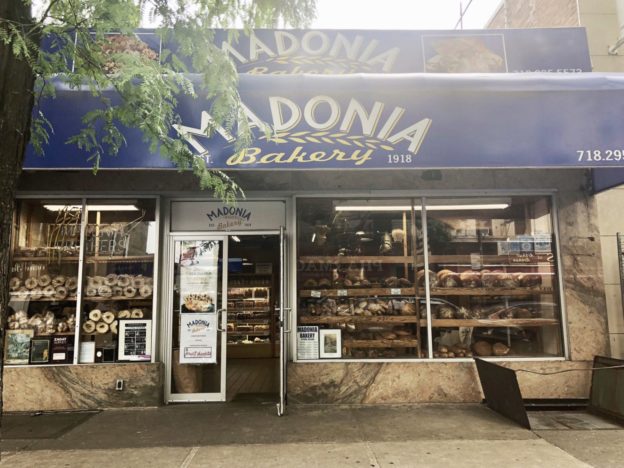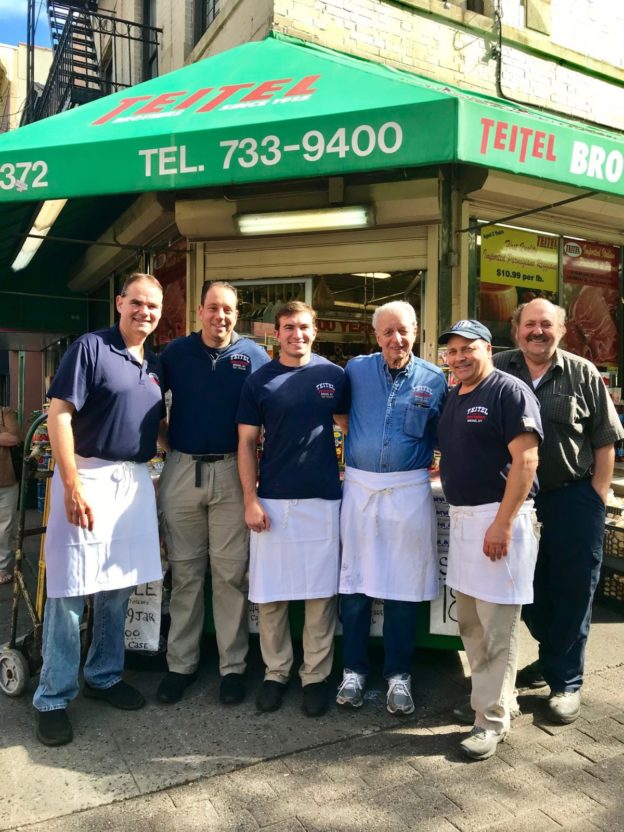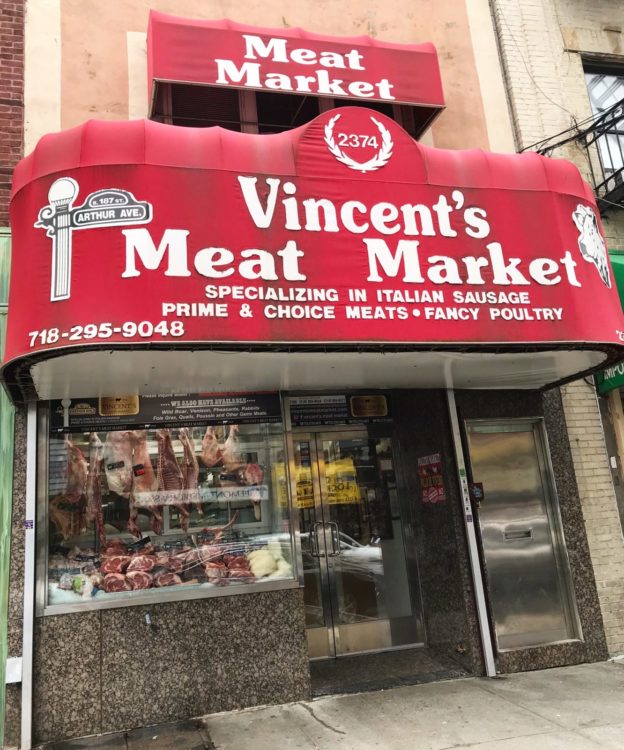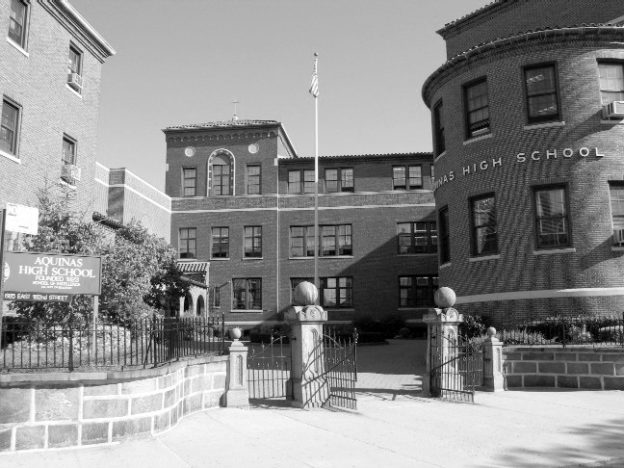500 East Fordham Road
1929
William H. Gompert
This stately block-long building, with its distyle-in-antis portico, raises its distinctive cupola over Fordham Road. The architect, William H. Gompert (1875-1946), succeeded the long-serving C.B.J. Snyder as the New York City Board of Education architect in 1923, and served until 1927, though several of his designs, including Theodore Roosevelt High School, were not completed until after he had resigned. (A school designed by Snyder may be seen nearby: P.S. 32, at Belmont Avenue and 182nd Street, was built in 1900.)
Gompert, a New York City native, attended Pratt Institute and worked for McKim, Mead & White and for Maynicke & Franke before forming his own firm in 1906. He designed some 170 schools in the five boroughs, including the High School of Music and Art (1924) on West 135th Street, DeWitt Clinton High School (1929) in the Bedford Park section of the Bronx, James Madison High School (1926) at 3787 Bedford Avenue in Brooklyn, Jamaica High School (1927) in Jamaica, Queens, Seward Park High School (1929) on Grand Street in the Lower East Side, and, possibly his masterpiece, P.S. 101 (1929) in Forest Hills Gardens.
Notable alumni of Theodore Roosevelt High School include June Allyson, once one of the most popular movie stars in the world; Rocky Colavito, the slugging right-fielder who in his major league baseball career appeared in nine All-Star Games; Ace Frehley, lead guitarist of the rock band Kiss, and Jimmie “J.J.” Walker, comedian and star of the 1970s TV show Good Times. Perhaps most notable among the school’s alumni is Chazz Palminteri (b. 1952). Palminteri’s one-man play, A Bronx Tale, premiered off-Broadway in 1989 and is set in Belmont. In 1993, Robert De Niro adapted the play into a movie and a musical version, directed by De Niro, ran on Broadway from 2016 to 2018.
Photo courtesy of NYCago.
685 East 182nd St.
1940
Eggers & Higgins
This Roman Catholic girls’ high school was established in 1939. The inventive, complexly massed U-shaped building, Romanesque in style, greets the street with strong apsidal forms attached to wings that project from a recessed central section designed to resemble a Medieval cloister. The architects Otto Eggers and Daniel Higgins had just succeeded to the practice of their late employer, John Russell Pope, and were contemporaneously at work putting the finishing touches on the National Gallery of Art and the Jefferson Memorial in Washington, D.C.
Photo courtesy of Aquinas High School.
441 East Fordham Road
1997
Shepley, Bulfinch, Richardson & Abbott
The main library of Fordham University houses the fine Fordham Museum of Greek, Etruscan and Roman Art, comprising the collection of William D. Walsh, who majored in Greek and Latin at Fordham before embarking upon a career in law, finance, and collecting. The museum is an excellent starting point for an afternoon’s stroll through Belmont.
3051 East Tremont Avenue
ca. 1880
This prominently sited brick church, designed in the High Victorian Gothic style, boasts a distinct steeple that can be seen from blocks away. Notably, Crow Hill, on which the church sits, was the site to which General William Howe and his troops retreated after being repulsed by American forces as they attempted to cross Westchester Creek. The use of polychromatic materials, such as the contrasting white stone trim and red brick, as well as the incorporation of banded arches into the facade, is emblematic of High Victorian Gothic architecture. The First Presbyterian Church of Throggs Neck was organized in the 1850s, and during the Civil War, church parishioners offered bowls of soup to soldiers passing through Throggs Neck via train so that they would not be tempted to visit nearby taverns. The congregation’s first structure burned down in 1870, and the date of current church is unknown, although some estimates date it to around 1880.
